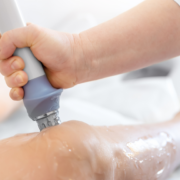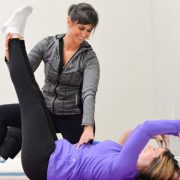60 Is the New 40: Why Longevity Is the Health Trend You Can’t Ignore
We’re living in a fascinating time.
People in their 60s and 70s aren’t settling for rocking chairs and a life confined to home anymore. They’re running marathons, hiking mountains, taking Pilates classes, and traveling the world. In fact, more and more people in their later decades are determined to feel like they did in their 40s and 50s – and thanks to advances in science and medicine – it’s becoming possible.
This desire to age differently is fueling a massive shift in how we think about health. According to the Global Wellness Institute, Americans now spend over $6,000 per person annually on wellness. This isn’t just personal choice – it reflects a booming market. The U.S. wellness industry has now surpassed $2 trillion in market size, accounting for nearly one-third of the global wellness economy.
Longevity has become the latest health trend.
But unlike quick fixes or fad diets, the focus isn’t on simply living longer – it’s about living better. The goal is to add life to your years, not just years to your life.
Why Longevity Matters
The reality is that most of the chronic conditions that plague us later in life – arthritis, diabetes, heart disease, dementia, osteoporosis – don’t appear overnight. They’re the result of decades of lifestyle habits, stress, and wear-and-tear that accumulate silently – until one day you’re suddenly facing a devastating diagnosis that could have been acted upon far sooner.
Doctors like Peter Attia, a physician and bestselling author known for his work on longevity and performance optimization, call this the difference between “Medicine 2.0” and “Medicine 3.0.” The old system waits until something goes wrong and then tries to fix it. The new approach – longevity medicine – looks at prevention, optimization, and slowing the aging process itself. It’s about maximizing your “healthspan,” the number of years you feel vibrant and capable, not just your lifespan.
Don’t Wait for Insurance to Catch Up
Here’s the catch: the very best treatments and practices that will help you feel 40 when you’re 70 aren’t covered by insurance. Insurance is designed for sick care, not health care. It will pay for a knee replacement once you can’t walk, but not for the cutting-edge therapies that could keep you from needing one in the first place.
If you want to truly thrive as you age, you must be prepared to invest in yourself.
That often means paying out of pocket for advanced testing services like Function Health or Dexascans – tools that provide powerful data so you can prevent disease and address problems before they become serious. I recently signed up for Function Health, which runs more than 100 markers and delivers insights far beyond traditional, insurance-based lab work. I was thrilled to learn that my biological age is six years younger than my actual age – and I walked away with clear recommendations to improve my diet and lifestyle. One of my Physical Therapy Specialists also invested in a Dexascan to get precise information about her bone health, muscle mass, and body composition – data she could never get from a standard doctor’s visit. She’s now using that information to guide her training, nutrition, and recovery choices, and already feels the benefits. She’ll repeat the scan in November to track progress and refine her plan.
But longevity isn’t just about data – it’s about what you do with it.
Strength training is one of the most powerful anti-aging tools we have. It preserves muscle mass and bone density, protects your joints, and helps prevent the falls and injuries that too often derail independence in later years. The problem? Pain and injuries are the number one reason people stop exercising – exactly when they need it most. That’s where “Medicine 3.0” level treatments come in: regenerative medicine to optimize the health of your joints and tissues, nutritional counseling to fine-tune your health from the inside out, and restorative practices like Yoga and Pilates to support full-body physical and mental resilience.
When you put these pieces together – advanced testing, proactive treatment, strength and mobility work, optimal nutrition, and recovery – you create a powerful longevity plan that allows you to do what most people think is impossible… Live like you’re 40 when you’re 60, 70, or beyond.
Just don’t wait for insurance to catch up – you’ll regret it. Plus – your future health is too important.
The Bottom Line
Too many people accept aging as a steady decline. But that narrative is shifting. Instead of asking: “How long can I live?” The better question is: “How long can I stay vibrant?”
That means reframing aging not as something to fear, but as something you can actively shape. Yes, it requires an investment. But what’s the real cost of not investing? Joint replacements, long-term medications, lost independence, and years of pain and limitation. Compared to that, the price of advanced testing, strength training, regenerative therapies, and restorative practices starts to look like a bargain – especially when these are the very things that keep you moving, traveling, and enjoying life. I believe in this so strongly that I’ve made it a priority in my own practice. I intentionally invest in treatments and services designed to help our clients feel like they’re 40 at any age – even when that means going against the grain of traditionally covered, insurance-based “sick care.”
Sixty truly can be the new forty – but only if you’re proactive. Longevity doesn’t happen by chance. It’s built on intentional choices, consistent habits, and a willingness to pursue therapies and treatments that insurance may not cover, but that will pay dividends in freedom, resilience, and quality of life.
So if you’re in your 60s or 70s and want to keep hiking, traveling, playing with your grandkids, and living life on your terms, don’t leave your health to chance – or to the insurance system. Longevity is within your reach. The only question to ask is: Are you ready to take the reins and make it happen?
Dr. Carrie Jose, Physical Therapy Specialist and Mechanical Pain Expert, owns CJ Physical Therapy & Pilates in Portsmouth, NH, and writes for Seacoast Media Group. If local to Portsmouth, NH, and looking for help, request a FREE Discovery Visit with one of her Specialists by CLICKING HERE.








